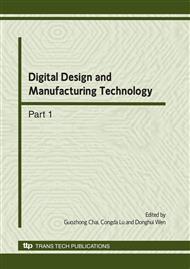p.277
p.283
p.288
p.292
p.297
p.301
p.306
p.311
p.316
Numerical Study of a Panel with Big Grooves Subjected to In-Plane Tension
Abstract:
The purpose of the present study is to propose a new technical method for improving the fatigue life of a panel with big grooves by setting rounded transition structure and stress relief slots in the vicinity of it. The main idea of the method is to reduce the stress concentration at the edges of rounded transition structure. To confirm the effectiveness of the method, analyses were performed by using software for two-dimensional elastic problems based on the body-force method. The calculation results show that the existence of stress relief slots effectively reduced the stress concentration at the edges of rounded transition structure. A close distance between the rounded transition structure and the stress relief groove resulted in a little influence of stress concentration at the edge of rounded transition structure. Also, a lower stress concentration was obtained by increasing the diameter and numbers of stress relief grooves. Results prove the effectiveness and certain engineering practicability of this method. The method is helpful for structure design.
Info:
Periodical:
Pages:
297-300
Citation:
Online since:
March 2010
Authors:
Price:
Сopyright:
© 2010 Trans Tech Publications Ltd. All Rights Reserved
Share:
Citation:


